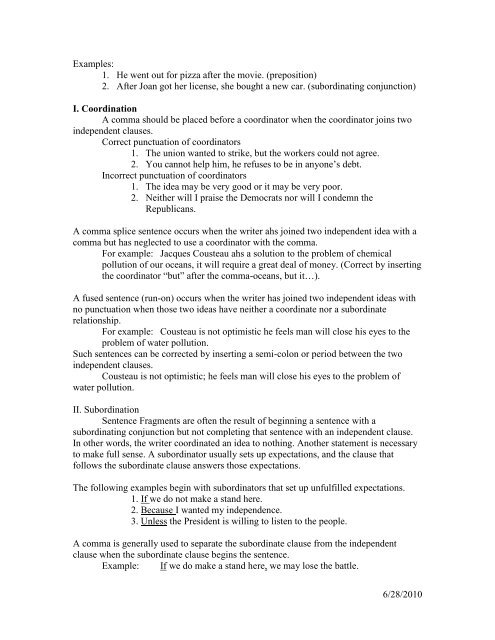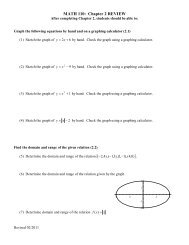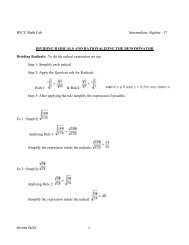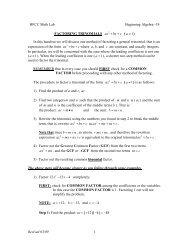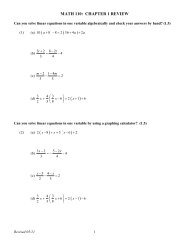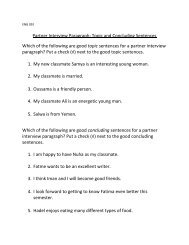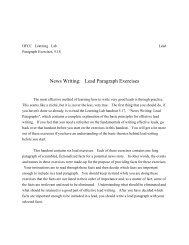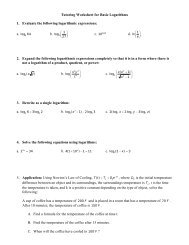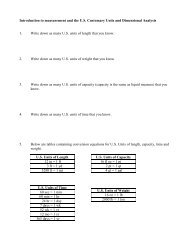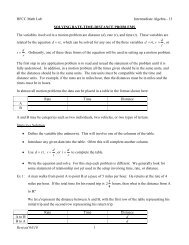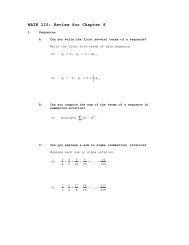CONJUNCTIONS, SUBORDINATORS, AND ...
CONJUNCTIONS, SUBORDINATORS, AND ...
CONJUNCTIONS, SUBORDINATORS, AND ...
Create successful ePaper yourself
Turn your PDF publications into a flip-book with our unique Google optimized e-Paper software.
Examples:<br />
1. He went out for pizza after the movie. (preposition)<br />
2. After Joan got her license, she bought a new car. (subordinating conjunction)<br />
I. Coordination<br />
A comma should be placed before a coordinator when the coordinator joins two<br />
independent clauses.<br />
Correct punctuation of coordinators<br />
1. The union wanted to strike, but the workers could not agree.<br />
2. You cannot help him, he refuses to be in anyone’s debt.<br />
Incorrect punctuation of coordinators<br />
1. The idea may be very good or it may be very poor.<br />
2. Neither will I praise the Democrats nor will I condemn the<br />
Republicans.<br />
A comma splice sentence occurs when the writer ahs joined two independent idea with a<br />
comma but has neglected to use a coordinator with the comma.<br />
For example: Jacques Cousteau ahs a solution to the problem of chemical<br />
pollution of our oceans, it will require a great deal of money. (Correct by inserting<br />
the coordinator “but” after the comma-oceans, but it…).<br />
A fused sentence (run-on) occurs when the writer has joined two independent ideas with<br />
no punctuation when those two ideas have neither a coordinate nor a subordinate<br />
relationship.<br />
For example: Cousteau is not optimistic he feels man will close his eyes to the<br />
problem of water pollution.<br />
Such sentences can be corrected by inserting a semi-colon or period between the two<br />
independent clauses.<br />
Cousteau is not optimistic; he feels man will close his eyes to the problem of<br />
water pollution.<br />
II. Subordination<br />
Sentence Fragments are often the result of beginning a sentence with a<br />
subordinating conjunction but not completing that sentence with an independent clause.<br />
In other words, the writer coordinated an idea to nothing. Another statement is necessary<br />
to make full sense. A subordinator usually sets up expectations, and the clause that<br />
follows the subordinate clause answers those expectations.<br />
The following examples begin with subordinators that set up unfulfilled expectations.<br />
1. If we do not make a stand here.<br />
2. Because I wanted my independence.<br />
3. Unless the President is willing to listen to the people.<br />
A comma is generally used to separate the subordinate clause from the independent<br />
clause when the subordinate clause begins the sentence.<br />
Example: If we do make a stand here, we may lose the battle.<br />
6/28/2010


